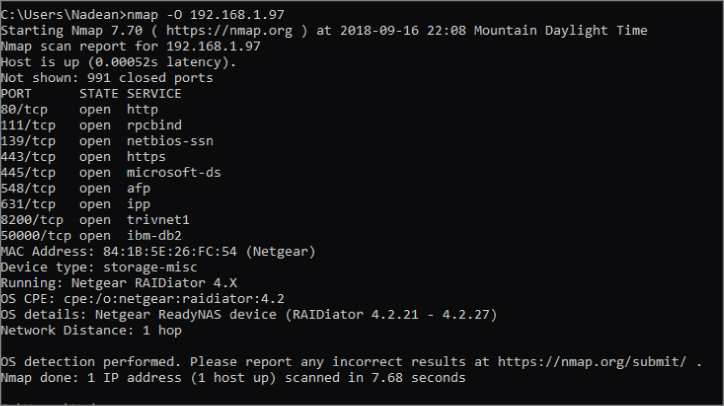Operating Systems
Nmap is often used to detect the operating system of a machine. Being able to correctly identify the operating system is key for many reasons, including doing inventory and finding vulnerabilities and specific exploits. Nmap is known for having the most robust and comprehensive OS fingerprint database.
When you are identifying specific operating systems, the key is how the operating system responds to Nmap probe packets. Windows XP and Windows Server 2003 are nearly identical, while Windows Vista and Ubuntu Linux 16 are completely different in the way they respond. In Figure 3.4, you see the response of an nmap ‐O

Figure 3.4: nmap ‐O
>nmap -O <target addresses>
























































